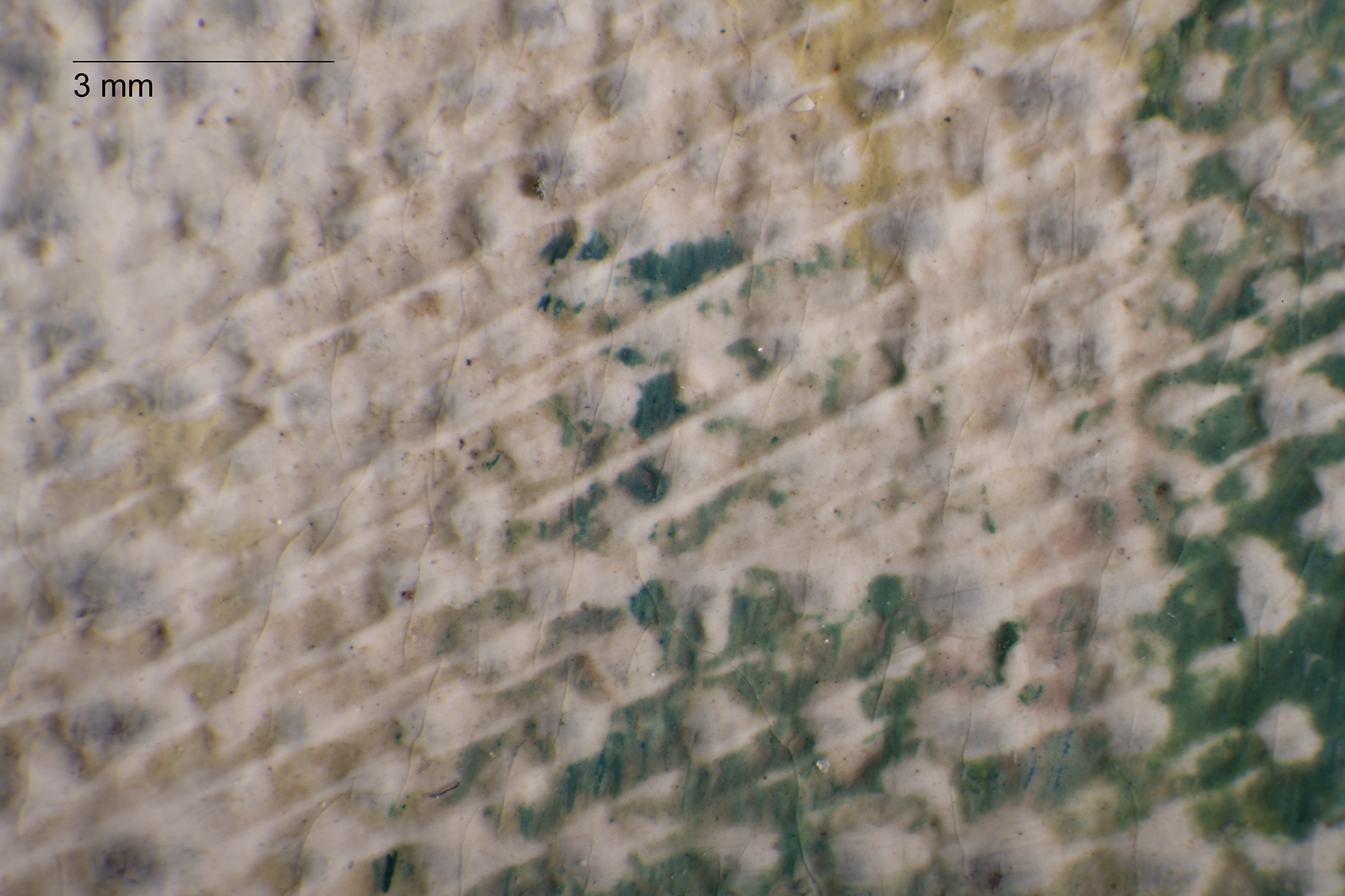![]()
Pierre-Auguste Renoir, Study for "Young Girls Playing Volant", ca. 1887
| Artist | Pierre-Auguste Renoir, French, 1841–1919 |
| Title | Study for “Young Girls Playing Volant” |
| Object Date | ca. 1887 |
| Alternate and Variant Titles | formery as Femme accoudée; formerly as Woman Leaning on Her Elbows |
| Medium | Oil on canvas |
| Dimensions (Unframed) | 5 1/2 x 9 in. (14 x 22.9 cm) |
| Signature | Signed lower left: Renoir |
| Credit Line | The Nelson-Atkins Museum of Art. Gift of Henry W. and Marion H. Bloch, 2015.13.21 |
Catalogue Entry
Citation
Chicago:
Danielle Hampton Cullen, “Pierre-Auguste Renoir, Study for “Young Girls Playing Volant”, ca. 1887,” catalogue entry in French Paintings and Pastels, 1600–1945: The Collections of The Nelson-Atkins Museum of Art, ed. Aimee Marcereau DeGalan (Kansas City: The Nelson-Atkins Museum of Art, 2022), https://doi.org/10.37764/78973.5.655.5407.
MLA:
Hampton Cullen, Danielle. “Pierre-Auguste Renoir, Study for “Young Girls Playing Volant”, ca. 1887,” catalogue entry. French Paintings and Pastels, 1600–1945: The Collections of The Nelson-Atkins Museum of Art, edited by Aimee Marcereau DeGalan, Nelson-Atkins Museum of Art, 2022. doi: 10.37764/78973.5.655.5407.
Throughout his career, Impressionist painter Pierre-Auguste Renoir (1841–1919) filled hundreds of small canvases with informal sketches of women, producing the majority of these works from the late 1890s until his death in 1919.1Renoir’s primary dealer, Paul Durand-Ruel, felt that these later sketches were harming Renoir’s reputation and in 1903 tackled the issue head on: “You are quite wrong to give away or to let people take from you all these sketches. We are determined to only exhibit your best paintings.” See Paul-Louis Durand-Ruel and Flavie Durand-Ruel, Paul Durand Ruel: Memoirs of the First Impressionist Art Dealer (1831–1922) (Paris: Flammarion, 2014), 213. Often left unfinished, such studies are considered a distinctive form of the artist’s pictorial expression. Albert André (1869–1954), an artist and close friend of Renoir’s later in his life, described Renoir’s fixation with sketches: “It is these sketches that he most loves; it’s in them that he expresses himself most fully, that he can be at his most audacious.” André went on to quote Renoir: “‘If I hadn’t been obliged to paint pictures to sell to a dealer and to make a living, I would have painted nothing except these.’”2Albert André, Renoir (Paris: Georges Crès et Cie, 1928), 49–50. With their sitters frequently seated in profile or depicted at half-length, these multifigural works disclose little information about the sitters’ identities or the settings. Indeed, the Nelson-Atkins sketch, formerly titled Woman Leaning on Her Elbows (Femme accoudée), was once associated with these works as a continued “exercise in rapid figural transcription.”3Richard R. Brettell, “Pierre-Auguste Renoir, Woman Leaning on Her Elbows (Femme accoudée),” in Richard R. Brettell, Manet to Matisse: Impressionist Masters from the Marion and Henry Bloch Collection, exh. cat. (Kansas City, MO: Nelson-Atkins Museum of Art, 2007), 92–93. Newly retitled Study for “Young Girls Playing Volant”, the work is now considered an exception to this pictorial anonymity. The sketch is now thought to be one of two preparatory studies (the other is Fig. 1) for Renoir’s painting Young Girls Playing Volant, formerly in the Minneapolis Institute of Art (Fig. 2).4Young Girls Playing Volant was formerly in the Minneapolis Institute of Art (1931–1958) and most recently in the estate of collector Huguette Clark. See François Daulte, Auguste Renoir: Catalogue raisonné de l’œuvre peint, vol. 1, Figures, 1860–1890 (Lausanne: Éditions Durand-Ruel, 1971), no. 517, unpaginated. See also Impressionist and Modern Art Evening Sale, including property from the Estate of Edgar M. Bonfman, Christie’s, New York, May 6, 2014, lot 10. Study for “Young Girls Playing Volant” will be published as such by Wildenstein Plattner Institute in their upcoming catalogue raisonné of the artist’s work. See Impressionist and Modern Art Part Two, Sotheby’s, New York, November 3, 2005, lot 134.
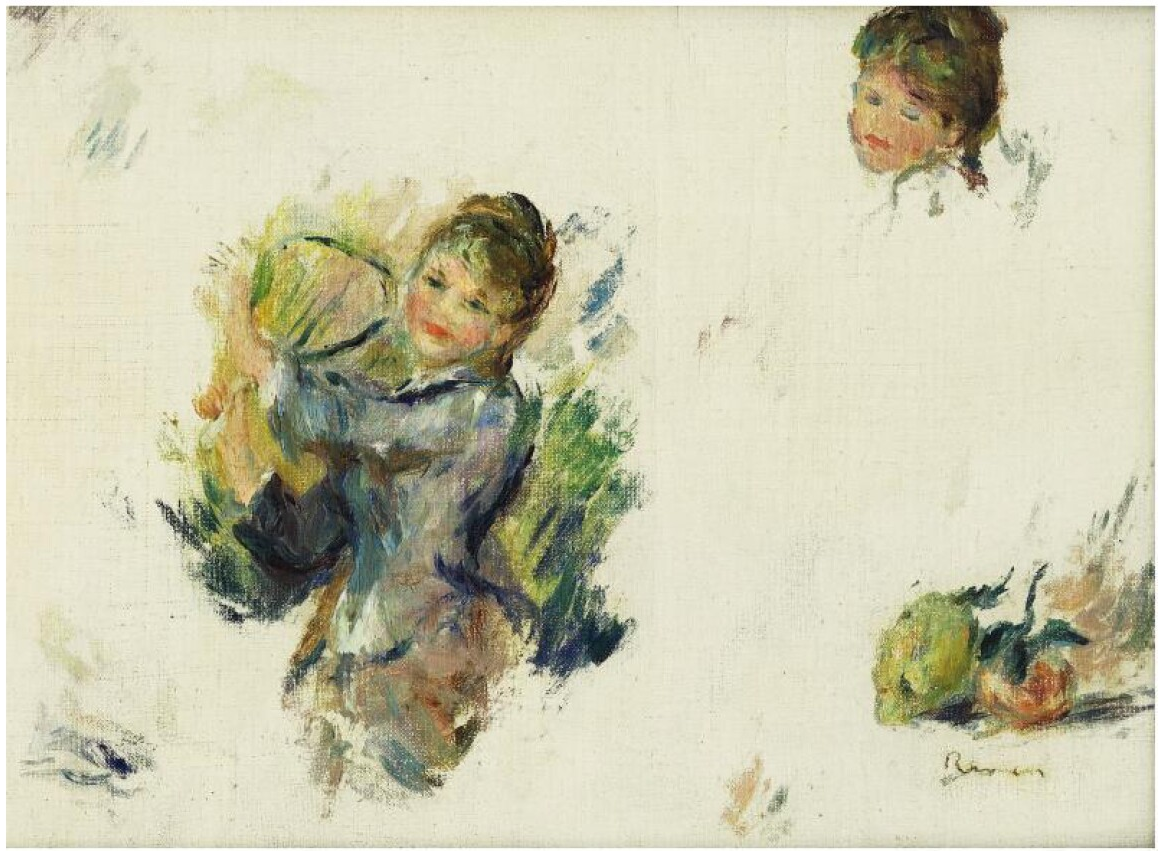 Fig. 1. Pierre-Auguste Renoir, Study for “Young Girls Playing Volant,” ca. 1887, oil on canvas, 9 10/16 x 13 in. (24.5 x 33 cm), private collection
Fig. 1. Pierre-Auguste Renoir, Study for “Young Girls Playing Volant,” ca. 1887, oil on canvas, 9 10/16 x 13 in. (24.5 x 33 cm), private collection
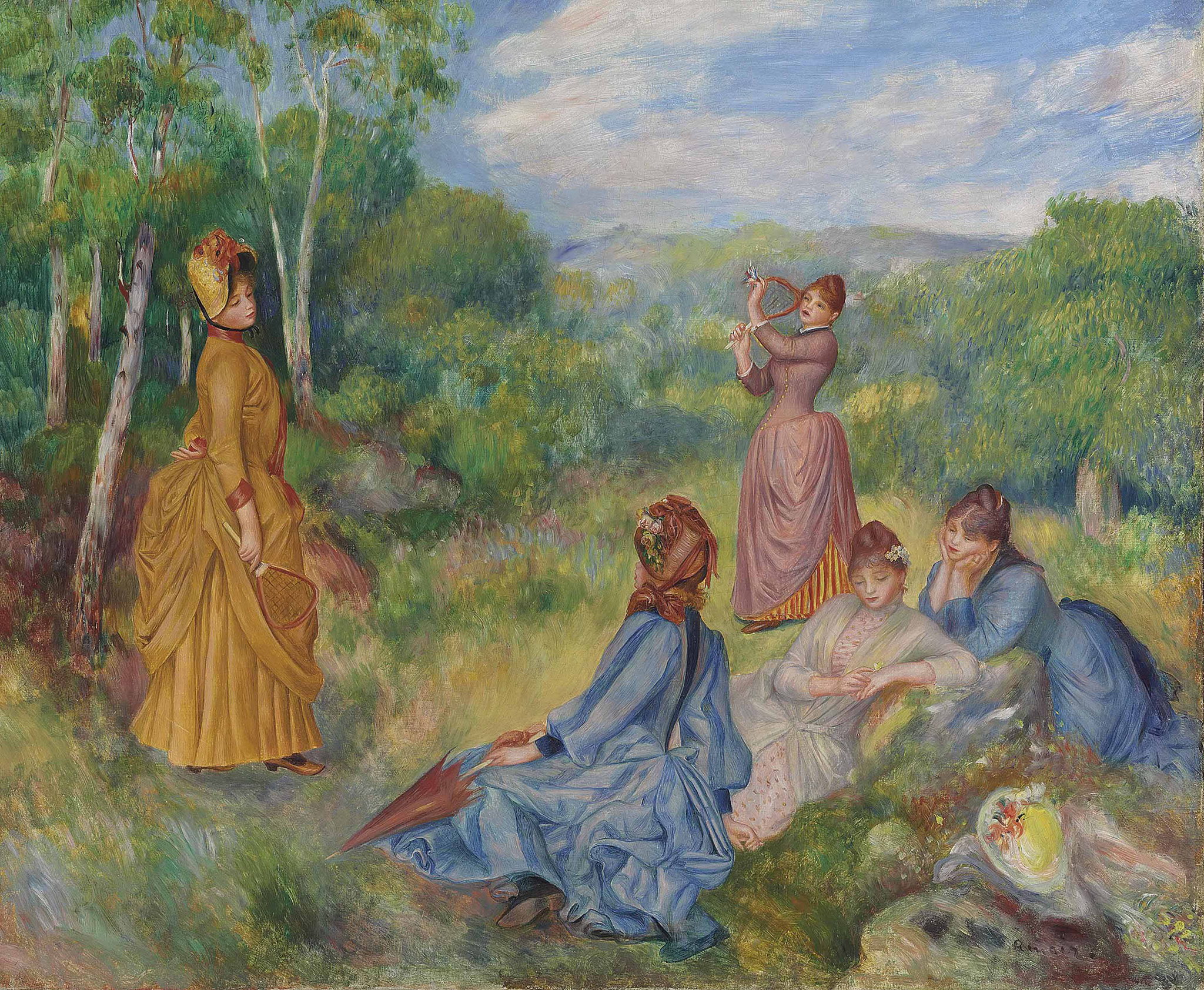 Fig. 2. Pierre-Auguste Renoir, Young Girls Playing Volant, ca. 1887, oil on canvas, 21 1/2 x 25 5/8 in. (54.6 x 65.2 cm), private collection
Fig. 2. Pierre-Auguste Renoir, Young Girls Playing Volant, ca. 1887, oil on canvas, 21 1/2 x 25 5/8 in. (54.6 x 65.2 cm), private collection
The finished painting, Young Girls Playing Volant, depicts five female figures, two of whom are playing volant, an early version of badminton, in the French countryside.10Also known as “battledore and shuttlecock,” volant was a popular pastime among the upper classes in Europe in the eighteenth and nineteenth centuries. Players used small racquets to keep a lightweight shuttlecock up in the air for as long as possible by batting it back and forth. In contrast to the later game of badminton, no net was used. For more on the history of the game, see The Encyclopaedia Britannica: A Dictionary of Arts, Sciences, Literature and General Information (1910-1911), 11th ed. (New York: The Encyclopaedia Britannica Company, 1910), 3:534. The setting of the painting is a generalized, idyllic landscape featuring an outline of trees in the middle distance and a hazy hillside beyond. This somewhat formulaic background suggests that the painting was not painted en plein airen plein air (adjective: plein-air): French for “outdoors.” The term is used to describe the act of painting quickly outside rather than in a studio. but completed in the artist’s studio as a carefully designed composition. This conclusion is supported by the existence of two preparatory studies: the Nelson-Atkins Study for “Young Girls Playing Volant” and the aforementioned Study for “Young Girls Playing Volant” (see Fig. 1). In the finished, large-scale painting, Renoir replicated his models' poses seen in the two preparatory works. The woman leaning forward on her elbows and resting her chin in her hand in the final composition shares an affinity with the Nelson-Atkins half-length sketch of a young woman wearing a dark purple dress, with her hair in a topknot. Moreover, the arrangement and profile of the woman in pink, holding a racket, at the left of the finished canvas bears a striking resemblance to the portrait of the woman with a racket in Study for “Young Girls Playing Volant.” Note, too, the similarities of the secondary figure who appears in the upper-right corner of both preparatory studies. In the Nelson-Atkins sketch, she looks down with closed eyes. This same downcast expression can be found on the woman in gray leaning on the rock at the right of the finished composition. Similarly, the head of the woman to the far right of Young Girls Playing Volant matches the face of the woman in orange standing at the far left of the final canvas. Renoir also produced a compositional drawing of Young Girls Playing Volant (ca. 1885; private collection) that allowed him to explore these formulaic poses and groupings to greater effect.11Illustrated in Guy-Patrice and Michel Dauberville, Renoir: Catalogue Raisonné des Tableaux, Pastels, Dessins et Aquarelles (Paris: Éditions Bernheim-Jeune, 2007), no. 1479, p. 2:495.


The sitter in the Nelson-Atkins painting, its related study, and the final composition share a likeness with one of Renoir’s favorite models, Margot Legrand.16Margot Legrand’s real name was Alma-Henriette Leboeuf. See Colin B. Bailey, Renoir’s Portraits: Impressions of an Age, exh. cat. (New Haven: Yale University Press, 1997), 13. For more information on Margot Legrand and her association with Renoir, see White, Renoir: An Intimate Biography, 74–75. A known beauty with light brown hair and sparkling blue eyes, Legrand posed for more than a dozen paintings by Renoir in the 1870s, including the famous Dancing at the Moulin de la Galette (1876; Musée d’Orsay, Paris) and The Lovers (ca. 1875; Národní Galerie, Prague). Although little is known about Legrand, considering the length of her tenure as Renoir’s model and the number of compositions in which she appeared nude or scantily clad (for example, Study: Torso, Effect of Sun, ca. 1876, private collection; and Little Blue Nude, ca. 1878–1879, Albright-Knox Museum), theories abound that their relationship was romantic as well as professional. Tragically, Legrand died of typhoid in February 1879 at the age of twenty-three.17See Paul Gachet and Eugene Murur, Lettres impressionists (Paris: B. Grasset, 1957), 81–82, 83. Renoir remained at her bedside until her death. The numerous paintings that she modeled for possess an almost profound tenderness, and as Barbara Ehrlich White writes: “His strong reaction to her illness and death in 1879 suggests that they were lovers.”18Barbara Ehrlich White, Renoir: His Life, Art and Letters (New York: Abradale Press, 1984), 51. This may explain why her image appears in numerous works, and possibly even in the Nelson-Atkins study painted about eight years after her death.
There is no firm evidence of the picture’s provenance before it appeared in the New York collection of George N. Richards (1882–1972) in the 1960s. After Renoir’s death, many of the small, informal sketches that remained in his studio were cut into even smaller paintings by gallerists like Durand-Ruel and Vollard.19House, Renoir in the Barnes Foundation, 62. For more information on the division of Renoir’s canvases, see John House, “Renoir’s Studio and Its Afterlife,” in Renoir in the Barnes Foundation, 47–62. It is possible that the Nelson-Atkins work was once part of a larger canvas that was cut apart during the division of Renoir’s paintings between his sons in 1922.20However, with no paint continuing onto the tacking margins, there is not enough data to support this theory. See Mary Schafer’s accompanying technical entry. For more on the division of paintings by the Renoir brothers, see Sylvie Patry, Renoir: Father and Son, exh. cat. (Paris: Flammarion, 2018). An alteration like this could explain, in part, why the Nelson-Atkins work temporarily lost its association as a study for Young Girls Playing Volant. Marion (née Helzberg, 1931–2013) and Henry Bloch (1922–2019) purchased the tiny Renoir in 1976 through Knoedler and Co. and gave it to the museum in 2015. A seemingly unassuming oil sketch on canvas, Renoir’s Study for “Young Girls Playing Volant” occupies a prominent place among the Bloch collection not only as the couple’s first Impressionist acquisition but, now, as a work that anticipates the artist’s progression toward a style that would occupy much his oeuvre throughout his late life.21Alice Thorson, “A Tiny Renoir Began Impressive Obsession: Bloch Collection Gets Its First Public Exhibition,” Kansas City Star, June 2, 2007, https://www.kansascity.com/latest-news/article294930/A-tiny-Renoir-began-impressive-obsession-Bloch-collection-gets-its-first-public-exhibition.html. For more information on this purchase and the Bloch collection, see Thomas M. Bloch, Many Happy Returns: The Story of Henry Bloch, America’s Tax Man (Hoboken, NJ: John Wiley and Sons, 2011), 174–75.
Notes
-
Renoir’s primary dealer, Paul Durand-Ruel, felt that these later sketches were harming Renoir’s reputation and in 1903 tackled the issue head on: “You are quite wrong to give away or to let people take from you all these sketches. We are determined to only exhibit your best paintings.” See Paul-Louis Durand-Ruel and Flavie Durand-Ruel, Paul Durand Ruel: Memoirs of the First Impressionist Art Dealer (1831–1922) (Paris: Flammarion, 2014), 213.
-
Albert André, Renoir (Paris: Georges Crès et Cie, 1928), 49–50.
-
Richard R. Brettell, “Pierre-Auguste Renoir, Woman Leaning on Her Elbows (Femme accoudée),” in Richard R. Brettell, Manet to Matisse: Impressionist Masters from the Marion and Henry Bloch Collection, exh. cat. (Kansas City, MO: Nelson-Atkins Museum of Art, 2007), 92–93.
-
Young Girls Playing Volant was formerly in the Minneapolis Institute of Art (1931–1958) and most recently in the estate of collector Huguette Clark. See François Daulte, Auguste Renoir: Catalogue raisonné de l’œuvre peint, vol. 1, Figures, 1860–1890 (Lausanne: Éditions Durand-Ruel, 1971), no. 517, unpaginated. See also Impressionist and Modern Art Evening Sale, including property from the Estate of Edgar M. Bonfman, Christie’s, New York, May 6, 2014, lot 10. Study for “Young Girls Playing Volant” will be published as such by Wildenstein Plattner Institute in their upcoming catalogue raisonné of the artist’s work. See Impressionist and Modern Art Part Two, Sotheby’s, New York, November 3, 2005, lot 134.
-
Ambroise Vollard, Renoir: An Intimate Record (New York: A. A. Knopf, 1925), 118.
-
Many other names are used to describe these intense years of experimentation, some of which reflect his style (the “Ingresque” period), some of which are descriptive of the painting quality (the “dry period”), and some of which are more judgmental in tone (the “aigre” period and the “crisis” period). The term “Ingresque” is perhaps the most widely used. Among the historians who refer to Renoir’s “Ingresque” style are John Rewald, Renoir Drawings (New York: Bittner, 1946); Anne Distel, Renoir: Sensuous Vision (New York: Harry N. Abrams, 1995); and John House, “Renoir’s ‘Baigneuses’ of 1887 and the Politics of Escapism,” Burlington Magazine 134, no. 1074 (1992): 578–85.
-
Renoir to his friend and patron, Madame Georges Charpentier, fall 1881, cited in Nicholas Wadley, trans. and ed., Renoir: A Retrospective, exh. cat. (New York: Hugh Lauter Levin Associates, 1987), 138.
-
For the translated letter, see Durand-Ruel and Durand-Ruel, Paul Durand Ruel, 170.
-
Brettell, Manet to Matisse, 92.
-
Also known as “battledore and shuttlecock,” volant was a popular pastime among the upper classes in Europe in the eighteenth and nineteenth centuries. Players used small racquets to keep a lightweight shuttlecock up in the air for as long as possible by batting it back and forth. In contrast to the later game of badminton, no net was used. For more on the history of the game, see The Encyclopaedia Britannica: A Dictionary of Arts, Sciences, Literature and General Information (1910-1911), 11th ed. (New York: The Encyclopaedia Britannica Company, 1910), 3:534.
-
Illustrated in Guy-Patrice and Michel Dauberville, Renoir: Catalogue Raisonné des Tableaux, Pastels, Dessins et Aquarelles (Paris: Éditions Bernheim-Jeune, 2007), no. 1479, p. 2:495.
-
Tableaux, études peintes, dessins et croquis de J.-A.-D. Ingres peintre d’histoire, sénateur, membre de l’Institut, exh. cat. (Paris: École Impériale des Beaux-Arts, Paris, 1867), no. 421, p. 71. For its bibliographic and exhibition history, see Georges Wildenstein, Ingres (London: Phaidon Press, 1956), no. 301, p. 227. Two more examples of Ingres’s academic style are Une Odalisque (ca. 1814; Musée du Louvre, Paris) and Mademoiselle Caroline Rivière (ca. 1806; Musée du Louvre, Paris). See Wildenstein, Ingres, nos. 24 and 43.
-
See, for example, Edouard Gatteaux, Collection des 120 dessins, croquis et peintures de M. Ingres classés et mis en ordre par son ami Edouard Gatteaux (Paris: A. Guérinet, 1875), unpaginated, as L’Age d’Or.
-
For the purposes of this essay, the aforementioned term “Ingrist Impressionism” seemed the most apt when discussing the Nelson-Atkins study and its finished canvas. For this term, see Barbara Ehrlich White, Renoir: An Intimate Biography (New York: Thames and Hudson, 2017), 113–15, 128–30, 139–55.
-
John House, Renoir in the Barnes Foundation (New Haven: Yale University Press, 2012), 111.
-
Margot Legrand’s real name was Alma-Henriette Leboeuf. See Colin B. Bailey, Renoir’s Portraits: Impressions of an Age, exh. cat. (New Haven: Yale University Press, 1997), 13. For more information on Margot Legrand and her association with Renoir, see White, Renoir: An Intimate Biography, 74–75.
-
See Paul Gachet and Eugene Murur, Lettres impressionists (Paris: B. Grasset, 1957), 81–82, 83.
-
Barbara Ehrlich White, Renoir: His Life, Art and Letters (New York: Abradale Press, 1984), 51.
-
House, Renoir in the Barnes Foundation, 62. For more information on the division of Renoir’s canvases, see John House, “Renoir’s Studio and Its Afterlife,” in Renoir in the Barnes Foundation, 47–62.
-
However, with no paint continuing onto the tacking margins, there is not enough data to support this theory. See Mary Schafer’s accompanying technical entry. For more on the division of paintings by the Renoir brothers, see Sylvie Patry, Renoir: Father and Son, exh. cat. (Paris: Flammarion, 2018).
-
Alice Thorson, “A Tiny Renoir Began Impressive Obsession: Bloch Collection Gets Its First Public Exhibition,” Kansas City Star, June 2, 2007, https://www.kansascity.com/latest-news/article294930/A-tiny-Renoir-began-impressive-obsession-Bloch-collection-gets-its-first-public-exhibition.html". For more information on this purchase and the Bloch collection, see Thomas M. Bloch, Many Happy Returns: The Story of Henry Bloch, America’s Tax Man (Hoboken, NJ: John Wiley and Sons, 2011), 174–75.
Technical Entry
Citation
Chicago:
Mary Schafer, “Pierre-Auguste Renoir, Study for “Young Girls Playing Volant”, ca. 1887,” technical entry in French Paintings and Pastels, 1600–1945: The Collections of The Nelson-Atkins Museum of Art, ed. Aimee Marcereau DeGalan (Kansas City: The Nelson-Atkins Museum of Art, 2022), https://doi.org/10.37764/78973.5.655.2088.
MLA:
Schafer, Mary. “Pierre-Auguste Renoir, Study for “Young Girls Playing Volant”, ca. 1887,” technical entry. French Paintings and Pastels, 1600–1945: The Collections of The Nelson-Atkins Museum of Art, edited by Aimee Marcereau DeGalan, Nelson-Atkins Museum of Art, 2022. doi: 10.37764/78973.5.655.2088.
In preparation for Young Girls Playing Volant (Fig. 2), Pierre-Auguste Renoir (1841–1919) completed a small-scale oil sketch that portrays two female figures in separate vignettes, one centrally placed and another at the top right. The lightweight, plain-weaveplain weave: A basic textile weave in which one weft thread alternates over and under the warp threads. Often this structure consists of one thread in each direction, but threads can be doubled (basket weave) or tripled to create more complex plain weave. Plain weave is sometimes called tabby weave. canvas, with its varying thread thickness and weave irregularities, is primed with a thin white groundground layer: An opaque preparatory layer applied to the support, either commercially or by the artist, to prevent absorption of the paint into the canvas or panel. See also priming layer. that continues onto the tacking marginstacking margins: The outer edges of canvas that wrap around and are attached to the stretcher or strainer with tacks or staples. See also tacking edge.. The ground exhibits a subtle diagonal texture across the picture planepicture plane: The two-dimensional surface where the artist applies paint. and left tacking margin, a feature that has been observed on other works by the artist (Fig. 5).1A similar diagonal texture has been identified in the ground layer of the following Renoir paintings: Young Woman Sewing (1879; Art Institute of Chicago), Blonde Bather (1881; Sterling and Francine Clark Art institute, Williamstown, MA), and Seascape (1879; Art Institute of Chicago). See Kelly Keegan, “Cat. 7. Young Woman Sewing, 1879: Technical Report,” in Renoir Paintings and Drawings at the Art Institute of Chicago, ed. Gloria Groom and Jill Shaw (Art Institute of Chicago, 2014), para. 30, https://publications.artic.edu/renoir/reader/paintingsanddrawings/section/135630/135630_anchor; Kelly Keegan, “Cat. 8. Seascape, 1879: Technical Report,” in Renoir Paintings and Drawings at the Art Institute of Chicago, para. 22, https://publications.artic.edu/renoir/reader/paintingsanddrawings/section/135636/135636_anchor. This texture was unevenly distributed across the canvas and may correspond to a thin, lightly brushed, second priming layerpriming layer: An opaque preparatory layer applied to the support, either commercially or by the artist, to prevent absorption of the paint into the canvas or panel. See also ground layer., applied by either a color merchantartist supplier(s): Also called colormen and color merchants. Artist suppliers prepared materials for artists. This tradition dates back to the Medieval period, but the industrialization of the nineteenth century increased their commerce. It was during this time that ready-made paints in tubes, commercially prepared canvases, and standard-format supports were available to artists for sale through these suppliers. It is sometimes possible to identify the supplier from stamps or labels found on the reverse of the artwork (see canvas stamp). or the artist.2No analysis has been undertaken of Study for “Young Girls Playing Volant” to confirm the ground composition or its layered structure.,3Although this diagonal texture has been linked to commercially primed canvases used by the artist, its irregular application is noteworthy, as Renoir occasionally modified commercial ground layers with selectively applied preparation layers. See Kelly Keegan and Inge Fiedler, “Rediscovering Renoir: Materials and Technique in the Paintings of Pierre-Auguste Renoir at the Art Institute of Chicago,” AIC Paintings Specialty Group: Postprints 28; Papers Presented at the 43rd Annual Meeting, Miami (Washington, DC: American Institute for Conservation of Historic and Artistic Works, 2015): 12.
 Fig. 6. Detail of the upper right figure, Study for “Young Girls Playing Volant” (ca. 1887)
Fig. 6. Detail of the upper right figure, Study for “Young Girls Playing Volant” (ca. 1887)
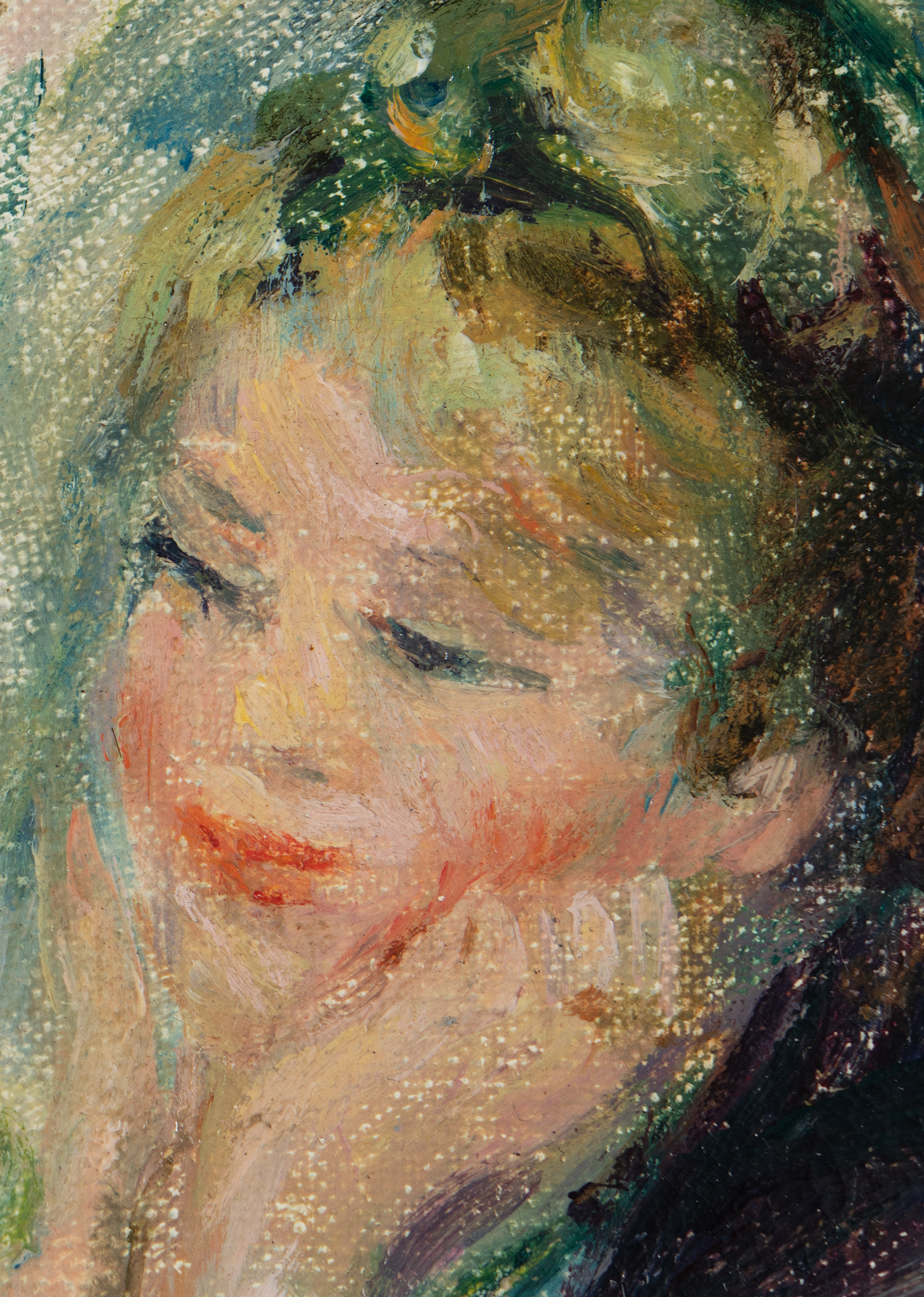 Fig. 7. Detail of the central figure, Study for “Young Girls Playing Volant” (ca. 1887)
Fig. 7. Detail of the central figure, Study for “Young Girls Playing Volant” (ca. 1887)
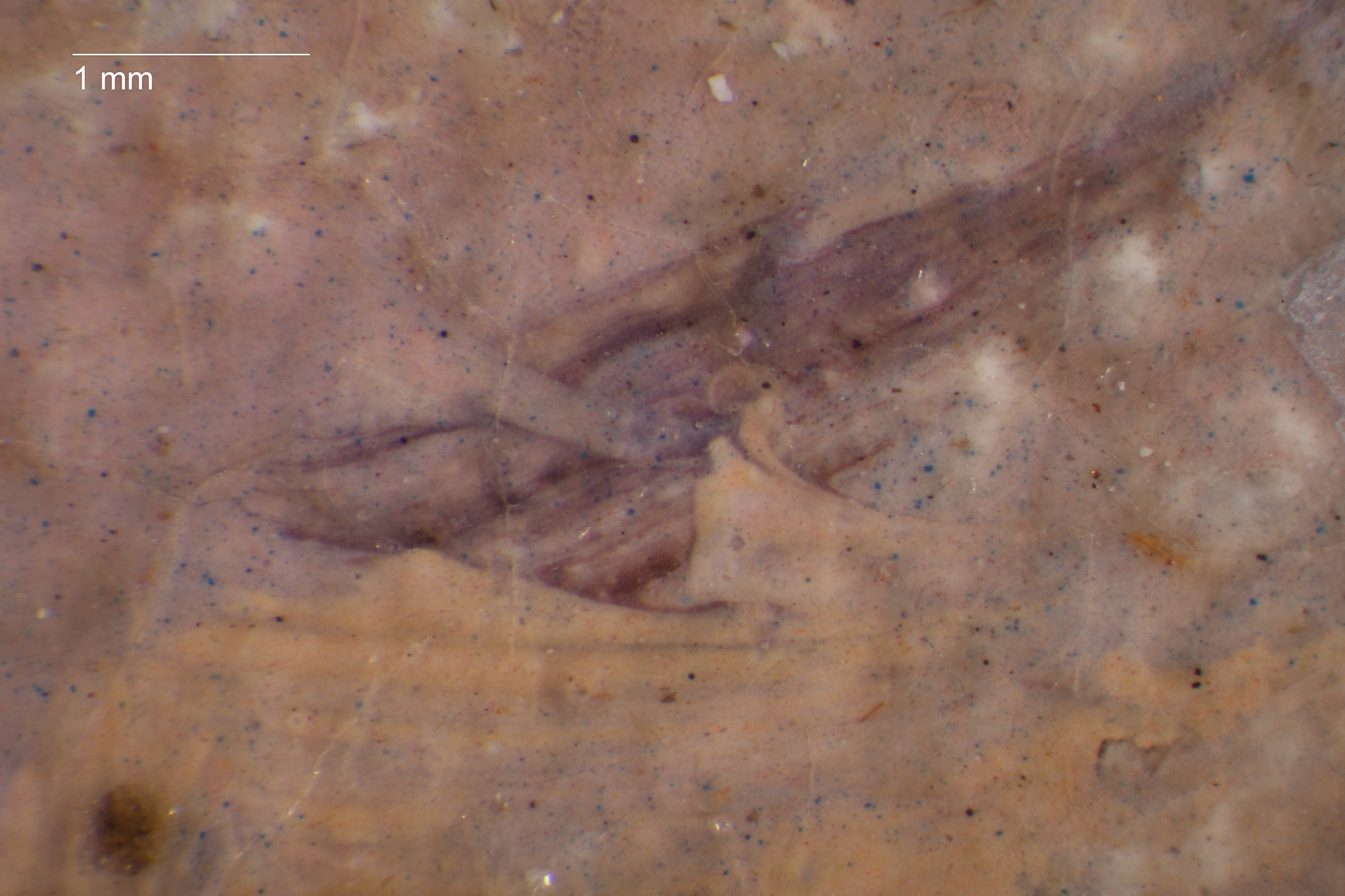 Fig. 8. Photomicrograph of the upper figure’s proper left eye, Study for “Young Girls Playing Volant” (ca. 1887), showing the artist’s wet-over-wet application of paint
Fig. 8. Photomicrograph of the upper figure’s proper left eye, Study for “Young Girls Playing Volant” (ca. 1887), showing the artist’s wet-over-wet application of paint
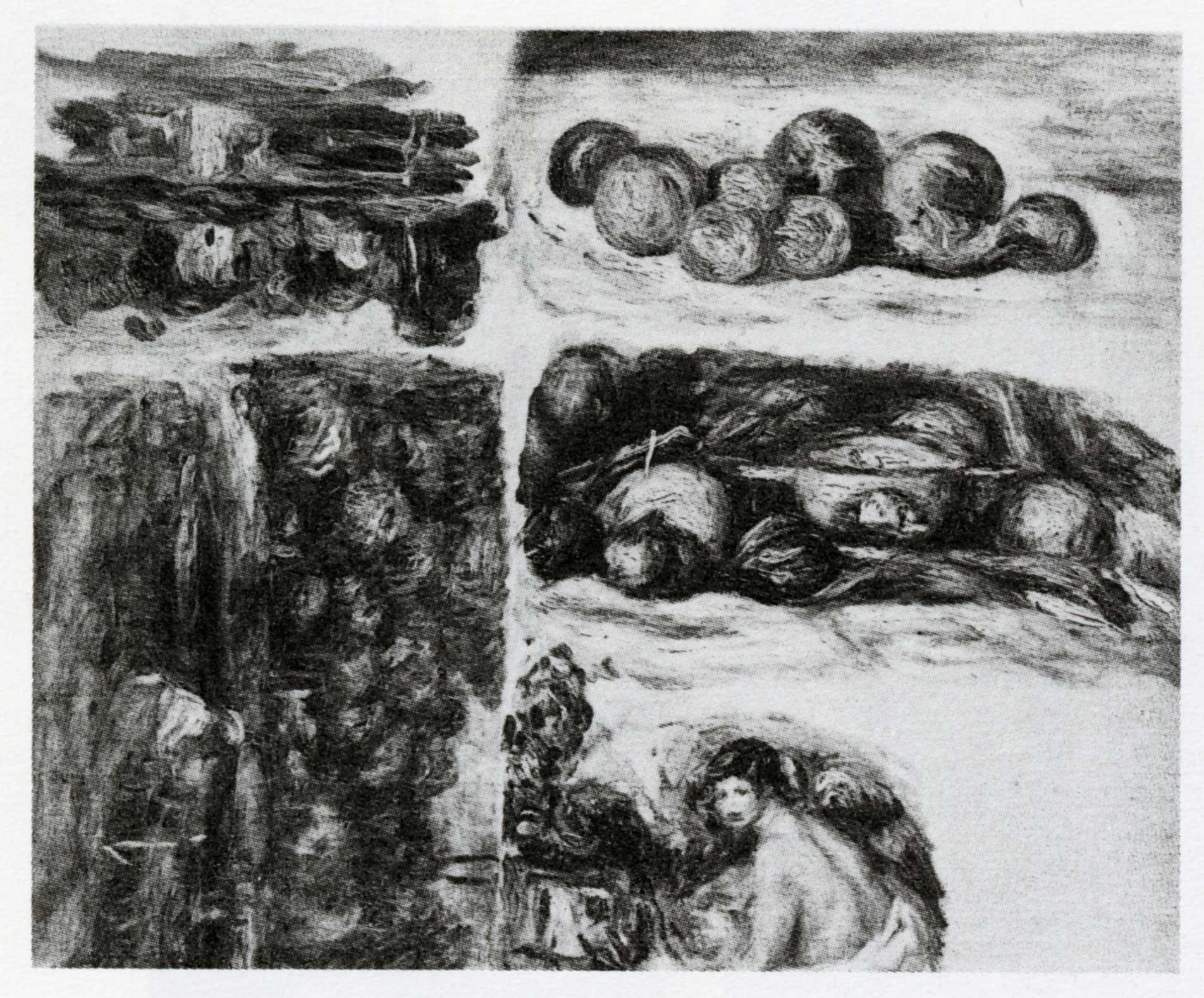 Fig. 9. Pierre-Auguste Renoir, Two Still Lifes, Two Landscapes, Nude, 1916, oil on canvas, 25 5/8 x 19 11/16 in. (65 × 50 cm), which was later cut and dispersed; photograph by Galerie Bernheim-Jeune, ca. 1920–1922, published in Marc Elder and Albert André, L’Atelier de Renoir (Paris: Bernheim-Jeune, 1931), no. 576
Fig. 9. Pierre-Auguste Renoir, Two Still Lifes, Two Landscapes, Nude, 1916, oil on canvas, 25 5/8 x 19 11/16 in. (65 × 50 cm), which was later cut and dispersed; photograph by Galerie Bernheim-Jeune, ca. 1920–1922, published in Marc Elder and Albert André, L’Atelier de Renoir (Paris: Bernheim-Jeune, 1931), no. 576
 Fig. 10. Detail of the right side of the bottom tacking margin with arrows marking the locations of tack holes, Study for “Young Girls Playing Volant” (ca. 1887)
Fig. 10. Detail of the right side of the bottom tacking margin with arrows marking the locations of tack holes, Study for “Young Girls Playing Volant” (ca. 1887)
 Fig. 11. Photograph from 1979 showing the verso of Study for “Young Girls Playing Volant” (ca. 1887)
Fig. 11. Photograph from 1979 showing the verso of Study for “Young Girls Playing Volant” (ca. 1887)
 Fig. 12. Photomicrograph of the bottom edge, Study for “Young Girls Playing Volant” (ca. 1887), showing yellow-orange paint that covers cracks, located below the central figure’s shoulder
Fig. 12. Photomicrograph of the bottom edge, Study for “Young Girls Playing Volant” (ca. 1887), showing yellow-orange paint that covers cracks, located below the central figure’s shoulder
 Fig. 13. Ultraviolet-induced visible fluorescence photograph, Study for “Young Girls Playing Volant” (ca. 1887)
Fig. 13. Ultraviolet-induced visible fluorescence photograph, Study for “Young Girls Playing Volant” (ca. 1887)
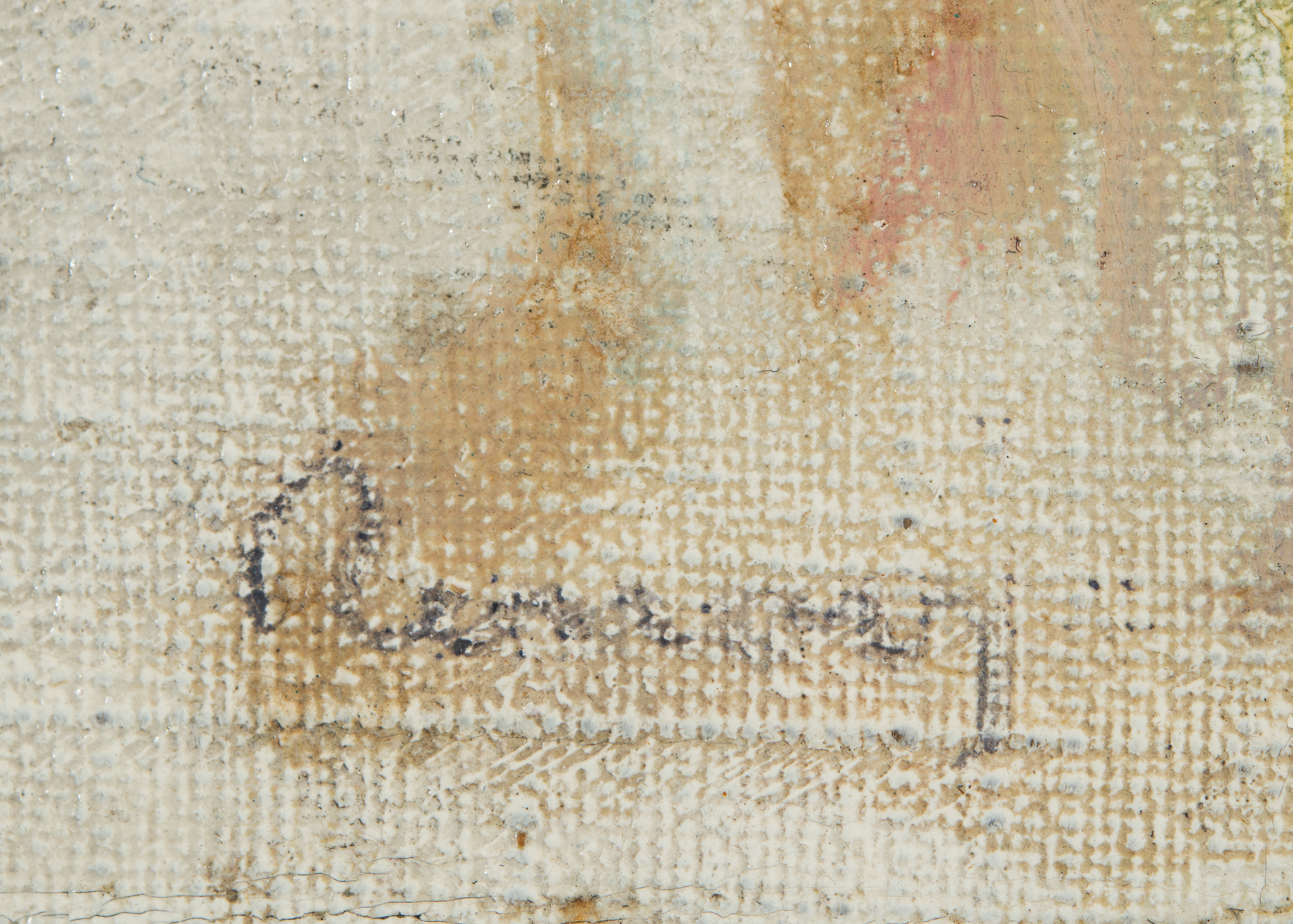 Fig. 14. Detail of the signature on the lower left of Study for “Young Girls Playing Volant” (ca. 1887)
Fig. 14. Detail of the signature on the lower left of Study for “Young Girls Playing Volant” (ca. 1887)
The lined painting is structurally sound with few age cracksage cracks: The formation of cracks that occur due to a loss of elasticity in the paint film and priming as these materials age, combined with responses to environmental changes (i.e. expansion and contraction of the support).. The ground layer is quite thin on the uppermost points of the canvas weave, and today its color is influenced by the underlying canvas, now somewhat darkened by the wax-based adhesive of the lining (see Fig. 6). Residues of discolored natural resin varnish are visible with the stereomicroscope, and the current synthetic varnish is discolored. Retouchingretouching: Paint application by a conservator or restorer to cover losses and unify the original composition. Retouching is an aspect of conservation treatment that is aesthetic in nature and that differs from more limited procedures undertaken solely to stabilize original material. Sometimes referred to as inpainting or retouch., applied in 1979 to strengthen forms and integrate missing washes, appears dark and non-fluorescing in the UV-visible induced fluorescence photograph of Figure 13.
Notes
-
A similar diagonal texture has been identified in the ground layer of the following Renoir paintings: Young Woman Sewing (1879; Art Institute of Chicago), Blonde Bather (1881; Sterling and Francine Clark Art institute, Williamstown, MA), and Seascape (1879; Art Institute of Chicago). See Kelly Keegan, “Cat. 7. Young Woman Sewing, 1879: Technical Report,” in Renoir Paintings and Drawings at the Art Institute of Chicago, ed. Gloria Groom and Jill Shaw (Art Institute of Chicago, 2014), para. 30, https://publications.artic.edu/renoir/reader/ paintingsanddrawings/section/135630/135630_anchor; Kelly Keegan, “Cat. 8. Seascape, 1879: Technical Report,” in Renoir Paintings and Drawings at the Art Institute of Chicago, para. 22, https://publications.artic.edu/renoir/reader/ paintingsanddrawings/section/135636/135636_anchor.
-
No analysis has been undertaken of Study for “Young Girls Playing Volant” to confirm the ground composition or its layered structure.
-
Although this diagonal texture has been linked to commercially primed canvases used by the artist, its irregular application is noteworthy, as Renoir occasionally modified commercial ground layers with selectively applied preparation layers. See Kelly Keegan and Inge Fiedler, “Rediscovering Renoir: Materials and Technique in the Paintings of Pierre-Auguste Renoir at the Art Institute of Chicago,” AIC Paintings Specialty Group: Postprints 28; Papers Presented at the 43rd Annual Meeting, Miami (Washington, DC: American Institute for Conservation of Historic and Artistic Works, 2015), 12.
-
For a discussion of the connections between the Nelson-Atkins sketch, a related preparatory study, and the finished painting, see the accompanying catalogue entry by Danielle Hampton Cullen.
-
Finely painted, blue contour lines are evident on the proper right cheek of the upper right face and the upper shoulders and edge of the central female’s skirt. When the painting is examined with a stereomicroscope, retouching is also present in these areas, making the blue lines appear to reside on top of subsequent paint applications.
-
Jean Renoir, Renoir, My Father, trans. Randolph and Dorothy Weaver (Boston: Little, Brown, 1958), 386.
-
Albert André and Marc Elder, Renoir’s Atelier = L’atelier de Renoir (San Francisco: Alan Wofsy Fine Arts, 1989), 1:XLIX.
-
The contents of Renoir’s studio were published in 1931 by Bernheim-Jeune, and the photographs document a number of multi-sketch canvases before they were cut down. Early photographs of these larger canvases can be viewed alongside the present-day, cut-down sketches in Martha Lucy and John House, Renoir in the Barnes Foundation (New Haven: Yale University Press, 2012), 54, 55, 61.
-
For a nuanced discussion of Renoir’s conflicted view of the sale of his sketches, see Lucy and House, Renoir in the Barnes Foundation, 62.
-
David Bomford, Jo Kirby, John Leighton, and Ashok Roy, Art in the Making: Impressionism (London: Yale University Press, 1991), 46. See 1979 photograph of the painting verso and accompanying treatment report in the Nelson-Atkins conservation file, no. 2015.13.21.
-
Iris Schaefer, Caroline von Saint-George, and Katja Lewerentz, Painting Light: The Hidden Techniques of the Impressionists (Milan: Skira, 2008), 144. For the cut-down sketches in particular, Renoir was asked to sign and “finish the edges, in order to transform them into [complete] paintings.” Albert André, Renoir (Paris: Georges Crès et Cie, 1928), 49.
-
Kelly Keegan, “Cat. 9. Acrobats at the Cirque Fernando (Francisca and Angelina Wartenberg), 1879: Technical Report,” in Renoir Paintings and Drawings at the Art Institute of Chicago, para. 40, https://publications.artic.edu/renoir/reader/paintingsanddrawings/section/135637/135637_anchor.
-
Although the signature is abraded, the study appears to have been signed with paint instead of marked with the imprint of a signature stamp. Detail photographs of signature stamps on several Renoir paintings can be found in Lucy and House, Renoir in the Barnes Foundation, 60.
Provenance
Citation
Chicago:
Danielle Hampton Cullen, “Pierre-Auguste Renoir, Study for “Young Girls Playing Volant”, ca. 1887,” documentation in French Paintings and Pastels, 1600–1945: The Collections of The Nelson-Atkins Museum of Art, ed. Aimee Marcereau DeGalan (Kansas City: The Nelson-Atkins Museum of Art, 2022), https://doi.org/10.37764/78973.5.655.4033.
MLA:
Hampton Cullen, Danielle. “Pierre-Auguste Renoir, Study for “Young Girls Playing Volant”, ca. 1887,” documentation. French Paintings and Pastels, 1600–1945: The Collections of The Nelson-Atkins Museum of Art, edited by Aimee Marcereau DeGalan, Nelson-Atkins Museum of Art, 2022. doi: 10.37764/78973.5.655.4033.
Probably with the artist, Paris and Les Collettes, near Cagnes-sur-Mer, France, 1890–December 3, 1919;
Probably inherited by the artist’s family, Les Collettes, near Cagnes-sur-Mer, France, 1919–October 1922 [1];
Probably by descent to one of the artist’s sons, Pierre Renoir (1885–1952), Jean Renoir (1894–1979), or Claude Renoir (1901–1969), Paris and Les Collettes, near Cagnes-sur-Mer, France, 1922;
George N. Richard (1882–1972), New York, by January 20, 1965–February 1972 [2];
Inherited by his widow, Bernice Richard (née Rougeot, 1920–1989), 1972–February 10, 1976 [3];
Purchased from Richard, through Knoedler and Co., New York, no. CA 9756, by Marion (née Helzberg, 1931–2013) and Henry (1922–2019) Bloch, Shawnee Mission, KS, February 10, 1976–June 15, 2015;
Their gift to the Nelson-Atkins Museum of Art, Kansas City, MO, 2015.
Notes
[1] Distribution of Renoir’s paintings among his three sons did not occur until October 1922, a few months after the youngest son, Claude, came of age. Accordingly, an itemized inventory of Renoir’s paintings titled “Partage par lots” was drawn up, presumably with an indication of which painting went to which son. The “Partage par lots” is undated; however, a typed letter dated August 8, 1922 from Pierre Renoir to his cousin Eugéne suggests that it was drawn up in October 1922; see “The Unknown Renoir: The Man, The Husband, The Father, The Artist,” Heritage Auctions, New York, September 19, 2013, lot 89007. Unfortunately, this document is not currently accessible to researchers.
[2] George N. Richard often bought and sold works through Knoedler, New York. Knoedler made an inventory and appraisal of Richard’s art collection on January 21, 1965. The painting appears as “Femme Accoudée, 83,” with a short description of its location and value. See appraisal, 1965, Richard, George N., Series VI.A, box 1091, folder 4, M. Knoedler and Co. records, approximately 1848–1971, The Getty Research Institute, Los Angeles. A label on the verso of the painting reads “A83-63 Renoir” in red ballpoint and “P” in blue ballpoint. This number might be Richard’s inventory number and may indicate that the painting was the 83rd item purchased by him and that it was bought in 1963.
[3] See correspondence from Jack Tanzer, Knoedler and Co., New York, to Henry Bloch, Shawnee Mission, KS, January 9, 1975, NAMA curatorial files.
Related Works
Citation
Chicago:
Danielle Hampton Cullen, “Pierre-Auguste Renoir, Study for “Young Girls Playing Volant”, ca. 1887,” documentation in French Paintings and Pastels, 1600–1945: The Collections of The Nelson-Atkins Museum of Art, ed. Aimee Marcereau DeGalan (Kansas City: The Nelson-Atkins Museum of Art, 2022), https://doi.org/10.37764/78973.5.655.4033.
MLA:
Hampton Cullen, Danielle. “Pierre-Auguste Renoir, Study for “Young Girls Playing Volant”, ca. 1887,” documentation. French Paintings and Pastels, 1600–1945: The Collections of The Nelson-Atkins Museum of Art, edited by Aimee Marcereau DeGalan, Nelson-Atkins Museum of Art, 2022. doi: 10.37764/78973.5.655.4033.
Pierre-Auguste Renoir, Etude de personnages, ca. 1885, drawing, illustrated in Guy-Patrice et Michel Dauberville, Renoir: Catalogue Raisonné des Tableaux, Pastels, Dessins et Aquarelles (Paris: Éditions Bernheim-Jeune, 2007), no. 1479, p. 2:495.
Pierre-Auguste Renoir, Étude pour Jeunes filles jouant au volant, ca. 1887, oil on canvas, 9 10/16 x 12 16/16 in. (24.5 x 33 cm), illustrated in Impressionist and Modern Art Part Two (New York: Sotheby’s, November 3, 2005), 45.
Pierre-Auguste Renoir, Jeunes filles jouant au volant, oil on canvas, ca. 1887, 21 1/2 x 25 5/8 in. (54.6 x 65.2 cm.), illustrated in Impressionist and Modern Art Evening Sale (New York: Christie’s, May 6, 2014), 64.
Exhibitions
Citation
Chicago:
Danielle Hampton Cullen, “Pierre-Auguste Renoir, Study for “Young Girls Playing Volant”, ca. 1887,” documentation in French Paintings and Pastels, 1600–1945: The Collections of The Nelson-Atkins Museum of Art, ed. Aimee Marcereau DeGalan (Kansas City: The Nelson-Atkins Museum of Art, 2022), https://doi.org/10.37764/78973.5.655.4033.
MLA:
Hampton Cullen, Danielle. “Pierre-Auguste Renoir, Study for “Young Girls Playing Volant”, ca. 1887,” documentation. French Paintings and Pastels, 1600–1945: The Collections of The Nelson-Atkins Museum of Art, edited by Aimee Marcereau DeGalan, Nelson-Atkins Museum of Art, 2022. doi: 10.37764/78973.5.655.4033.
The Bloch Collection, The Nelson-Atkins Museum of Art, Kansas City, MO, June–August 1982, no cat.
Manet to Matisse: Impressionist Masters from the Marion and Henry Bloch Collection, The Nelson-Atkins Museum of Art, Kansas City, MO, June 9–September 9, 2007, no. 16, as Woman Leaning on Her Elbows (Femme accoudée).
References
Citation
Chicago:
Danielle Hampton Cullen, “Pierre-Auguste Renoir, Study for “Young Girls Playing Volant”, ca. 1887,” documentation in French Paintings and Pastels, 1600–1945: The Collections of The Nelson-Atkins Museum of Art, ed. Aimee Marcereau DeGalan (Kansas City: The Nelson-Atkins Museum of Art, 2022), https://doi.org/10.37764/78973.5.655.4033.
MLA:
Hampton Cullen, Danielle. “Pierre-Auguste Renoir, Study for “Young Girls Playing Volant”, ca. 1887,” documentation. French Paintings and Pastels, 1600–1945: The Collections of The Nelson-Atkins Museum of Art, edited by Aimee Marcereau DeGalan, Nelson-Atkins Museum of Art, 2022. doi: 10.37764/78973.5.655.4033.
“The Bloch Collection,” Gallery Events (The William Rockhill Nelson Gallery of Art and Mary Atkins Museum of Fine Arts) (June–August 1982): unpaginated.
Alice Thorson, “A final countdown: A rare showing of Impressionist paintings from the private collection of Henry and Marion Bloch is one of the inaugural exhibitions at the 165,000-square-foot glass-and-steel structure,” Kansas City Star (June 29, 2006): B1, as Women Leaning on her Elbows.
Richard R. Brettell and Joachim Pissarro, Manet to Matisse: Impressionist Masters from the Marion and Henry Bloch Collection, exh. cat. (Kansas City, MO: Nelson-Atkins Museum of Art, 2007), 10, 15, 90–93, 158, (repro.), as Woman Leaning on Her Elbows (Femme accoudée).
“A tiny Renoir began impressive obsession: Bloch collection gets its first public exhibition,” Kansas City Star (June 2, 2007): https://www.kansascity.com/latest-news/article294930/A-tiny-Renoir-began-impressive-obsession-Bloch-collection-gets-its-first-public-exhibition.html.
Alice Thorson, “First Public Exhibition: Marion and Henry Bloch’s art collection,” Kansas City Star (June 3, 2007): E4.
“Lasting Impressions: A Tribute to Marion and Henry Bloch,” Member Magazine (The Nelson-Atkins Museum of Art) (Fall 2007): 11, (repro.).
Alice Thorson, “Museum to Get 29 Impressionist Works from the Bloch Collection,” Kansas City Star (February 5, 2010): A1.
Carol Vogel, “Inside Art: Kansas City Riches,” New York Times 159, no. 54,942 (February 5, 2010): C26.
Alice Thorson, “Henry and Marion Bloch donate impressionist collection to the Nelson,” Kansas City Star (February 7, 2010): G1.
Diane Stafford, “Bloch Gift to Go for Nelson Upgrade,” Kansas City Star 135, no. 203 (April 8, 2015): A8.
“Nelson-Atkins Museum of Art Officially Accessions Bloch Impressionist Masterpieces,” Artdaily.org (July 25, 2015): http://artdaily.com/news/80246/Nelson-Atkins-Museum-of-Art-officially-accessions-Bloch-Impressionist-masterpieces#.V6oGwlKFO9.
Nancy Staab, “Van Gogh is a Go!” 435: Kansas City’s Magazine (September 2015): 76.
“Nelson-Atkins to unveil renovated Bloch Galleries of European Art in winter 2017,” Artdaily.org (July 20, 2016): http://artdaily.com/news/88852/Nelson-Atkins-to-unveil-renovated-Bloch-Galleries-of-European-Art-in-winter-2017-#.W-nfbpNKi70.
“Nelson-Atkins Museum of Art celebrates generosity of Henry Bloch with new acquisition,” Artdaily.org (October 18, 2016): http://artdaily.com/news/90923/Nelson-Atkins-Museum-of-Art-celebrates-generosity-of-Henry-Bloch-with-new-acquisition#.XL88c-TsaUk.
Catherine Futter et al., Bloch Galleries: Highlights from the Collection of the Nelson-Atkins Museum of Art (Kansas City, MO: Nelson-Atkins Museum of Art, 2016), 82, (repro.), as Women Leaning on Her Elbows.
Albert Hect, “Henry Bloch’s Masterpieces Collection to Go on Display at Nelson-Atkins Museum,” Jewish Business News (February 26, 2017): http://jewishbusinessnews.com/2017/02/26/henry-bloch-masterpieces-collection.
David Frese, “Inside the Bloch Galleries: An interactive experience,” Kansas City Star 137, no. 169 (March 5, 2017): 1D, 5D, (repro.), as Woman Leaning on her Elbows.
“Editorial: Thank you, Henry and Marion Bloch,” Kansas City Star (March 7, 2017): http://www.kansascity.com/opinion/editorials/ article137040948.html.
Hampton Stevens, “(Not Actually) 12 Things To Do During The Big 12 Tournament,” Flatland: KCPT’s Digital Magazine (March 9, 2017): http://www.flatlandkc.org/arts-culture/sports/not-actually-12-big-12-tournament/.
Laura Spencer, “The Nelson-Atkins’ Bloch Galleries feature Old Masterworks and New Technology,” KCUR (March 10, 2017): http://kcur.org/post/nelson-atkins-bloch-galleries-feature-old-masterworks-and-new-technology#stream/0.
Victoria Stapley-Brown, “Nelson-Atkins Museum’s new European art galleries come with a ‘love story,’” Art Newspaper (March 10, 2017): http://theartnewspaper.com/news/museums/nelson-atkins-museum-s-new-european-art-galleries-come-with-a-love-story/.
Harry Bellet, “Don du ciel pour le Musée Nelson-Atkins,” Le Monde (March 13, 2017): http://www.lemonde.fr/arts/article/2017/03/13/don-du-ciel-pour-le-musee-nelson-atkins_5093543_1655012.html.
Menachem Wecker, “Jewish Philanthropist Establishes Kansas City as Cultural Mecca,” Forward (March 14, 2017): http://forward.com/culture/365264/jewish-philanthropist-establishes-kansas-city-as-cultural-mecca/ [repr. in Menachem Wecker, “Kansas City Collection Is A Chip Off the Old Bloch,” Forward (March 17, 2017): 20–22].
Juliet Helmke, “The Bloch Collection Takes up Residence in Kansas City’s Nelson Atkins Museum,” BlouinArtInfo International (March 15, 2017): http://www.blouinartinfo.com/news/story/2005267/the-bloch-collection-takes-up-residence-in-kansas-citys.
Erich Hatala Matthes, “Digital replicas are not soulless—they help us engage with art,” Apollo: The International Art Magazine (March 23, 2017), https://www.apollo-magazine.com/digital-replicas-3d-printing-original-artworks/.
Louise Nicholson, “How Kansas City got its magnificent museum,” Apollo (April 7, 2017), https://www.apollo-magazine.com/how-kansas-city-got-its-magnificent-museum/.
Lilly Wei, “Julián Zugazagoitia: ‘Museums should generate interest and open a door that leads to further learning,’” Studio International (August 21, 2017): http://studiointernational.com/index.php/julian-zugazagoitia-director-nelson-atkins-museum-of-art-kansas-city-interview.
Robert D. Hershey Jr., “Henry Bloch, H&R Block’s cofounder, dies at 96,” Boston Globe (April 23, 2019): https://www3.bostonglobe.com/metro/obituaries/ 2019/04/23/henry-bloch-block-cofounder/?arc404=true.
Robert D. Hershey Jr., “Henry W. Bloch, Tax-Preparation Pioneer (and Pitchman), Is Dead at 96,” New York Times (April 23, 2019): https://www.nytimes.com/2019/04/23/obituaries/henry-w-bloch-dead.html.
Claire Selvin, “Henry Wollman Bloch, Collector and Prominent Benefactor of Nelson-Atkins Museum of Art, Is Dead at 96,” ArtNews (April 23, 2019): http://www.artnews.com/2019/04/23/henry-bloch-dead-96/.
Frank Morris, “Henry Bloch, Co-Founder Of H&R Block, Dies At 96,” npr.org (April 24, 2019): https://www.npr.org/2019/04/24/716641448/henry-bloch-co-founder-of-h-r-block-dies-at-96.
“Henry Wollman Bloch (1963–2019),” Art Forum (April 24, 2019): https://www.artforum.com/news/henry-wollman-bloch-1922-2019-79547.
Ignacio Villarreal, “Nelson-Atkins mourns loss of Henry Bloch,” ArtDaily.org (April 24, 2019): http://artdaily.com/news/113035/Nelson-Atkins-mourns-loss-of-Henry-Bloch#.XMB76qR7laQ.
Eric Adler, “Sold for $3.25 million, Bloch’s home in Mission Hills may be torn down,” Kansas City Star 141, no. 90 (December 16, 2020): 2A.
